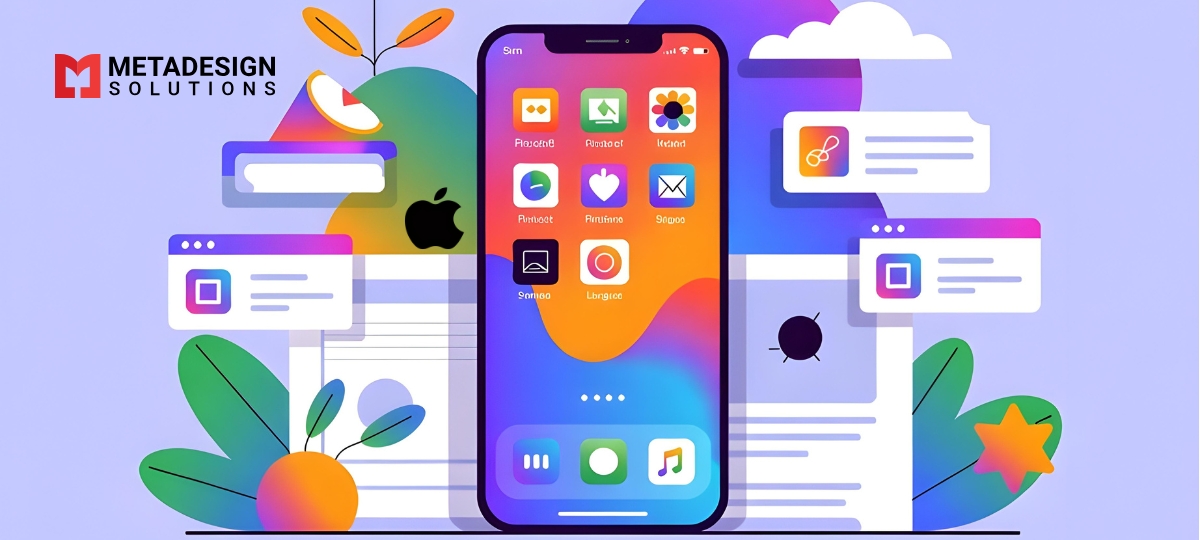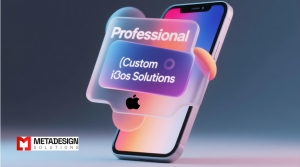Introduction:
In today’s digital world, iOS applications are central to enterprise operations across multiple industries. From retail to banking, healthcare to education, businesses rely on robust, high-performance iOS applications to provide services to millions of users. With user demands increasing and mobile technology advancing, it is crucial for enterprise-level iOS applications to handle millions of users without facing crashes or downtime.
Building an app capable of handling high user loads involves careful consideration of both app architecture and backend services. Ensuring reliability, scalability, and performance is a key challenge in meeting these requirements. In this blog, we will explore the strategies, tools, and best practices used by a leading iOS App Development Company to scale and handle the demands of a million-user load, without crashing.
1. Understanding the Challenges of High-Traffic iOS Applications
The Importance of Scalability and Performance
For an enterprise to stay competitive, it must ensure that its mobile application can support millions of users without affecting performance or user experience. Scalability refers to the app’s ability to handle growth in user load, traffic spikes, and expanding features over time. For iOS apps, this means that the app should be designed to handle not only the initial user load but also scale efficiently as traffic grows, ensuring zero downtime and minimal latency.
Performance, on the other hand, refers to how fast the app responds to user requests and how smoothly it runs on different iOS devices. High-performance apps are crucial for retaining users, especially when they interact with real-time data or critical functions (e.g., mobile banking, healthcare tracking).
User Behavior and Its Impact on App Load
User behavior can heavily impact how an app performs under load. For instance, peak usage times—such as during sales or special promotions—can trigger traffic surges that strain the backend and infrastructure. Understanding patterns like app usage times, transaction volumes, and concurrency is key to scaling effectively. Implementing a strategy such as Unified iOS + Ecosystem Sync can help align these user behaviors with optimized app performance across Apple devices.
Ready to Scale Your IOS App Without Crashes?
Partner with MetaDesign Solutions — a trusted iOS app development company delivering enterprise-level performance, security, and scalability.
2. Key Architectural Patterns for Handling Millions of Users
Modular Architecture
To efficiently scale an iOS application, developers often employ modular architecture. Modularizing an app helps break down complex systems into manageable, smaller units. Each module can be updated, tested, and scaled independently. Modular architectures also improve the maintainability of the application, making it easier to add new features without affecting the core functionality.
Microservices and Serverless Frameworks
Microservices and serverless frameworks provide a powerful way to scale enterprise-level apps. Microservices divide the backend services into smaller, decoupled components that can be scaled independently. Each service handles a specific task and communicates with other services via APIs or message queues.
Serverless frameworks, like AWS Lambda or Azure Functions, allow the app to run code in response to events without managing the server infrastructure. These services automatically scale based on the number of requests, ensuring performance remains consistent under varying loads.
Cloud Computing Integration
Cloud computing platforms, such as AWS, Google Cloud, and Microsoft Azure, play a critical role in scaling enterprise-level iOS apps. These platforms offer services such as elastic load balancing, auto-scaling, and distributed computing, enabling the app to handle millions of simultaneous users.
Cloud services also provide on-demand infrastructure, allowing businesses to avoid over-provisioning resources. With cloud-based services, enterprise apps can scale horizontally, meaning adding more servers or instances to meet increasing demand.
Key LSI Keywords: scalable architecture, cloud computing, microservices, serverless, elastic load balancing
3. Backend Optimization for High-Traffic iOS Apps
Load Balancing and Auto-Scaling
Load balancing ensures that user traffic is evenly distributed across multiple servers or instances, preventing any single server from becoming overwhelmed. This technique helps maintain performance levels, even during peak traffic times. For high-traffic iOS apps, load balancers can be deployed at various levels, from the database layer to the application layer, ensuring smooth traffic distribution.
Auto-scaling automatically adjusts the number of resources allocated to the app in response to fluctuating traffic. For example, when traffic surges, auto-scaling ensures additional server instances are provisioned, while during quieter periods, the system can scale down to save costs.
Caching Mechanisms for Speed
Caching is essential for improving app performance, particularly in high-traffic environments. Caching reduces the load on the server by storing frequently accessed data (e.g., images, user sessions, or API responses) locally or in fast-access systems like Redis or Memcached. This way, repeated requests can be served faster, reducing the response time and improving the overall user experience.
Database Scalability
As user loads increase, so does the demand on databases. To handle millions of users, databases must be optimized for high availability, scalability, and performance. Database sharding (splitting data into smaller, manageable chunks) and replication (duplicating data across multiple servers) are common practices for scaling databases. NoSQL databases like MongoDB and Cassandra also offer flexible, scalable solutions for managing large volumes of data.
Key LSI Keywords: load balancing, auto-scaling, caching, Redis, database scalability, database sharding
4. Frontend Optimization for User Load Management
Efficient User Interface Design
A well-optimized user interface (UI) is essential for preventing performance degradation, especially when the app faces high user load. UI components should be designed to minimize resource usage and improve responsiveness. For example, lazy loading of images, infinite scroll, and asynchronous data fetching can ensure the app remains responsive even during heavy use.
Optimizing Resource Consumption
Efficient use of resources (such as memory and battery) is vital for maintaining smooth performance. App resource management tools can be used to monitor and optimize how the app uses system resources, reducing crashes due to memory overload and ensuring smooth operation during peak loads.
Background Processing and Data Sync
Background tasks like data syncing and notifications should be managed efficiently to prevent the app from becoming slow or unresponsive. Background fetch and push notifications help keep the app updated without requiring constant user interaction, reducing server load and improving overall efficiency.
Key LSI Keywords: UI optimization, lazy loading, resource management, background processing
5. Monitoring and Error Handling in Enterprise iOS Solutions
Real-Time Monitoring and Alerts
Real-time monitoring tools like New Relic or AppDynamics provide developers with detailed insights into the app’s performance, including response times, error rates, and server health. With continuous monitoring, developers can quickly identify and address issues before they affect users.
Crash Reporting and Recovery Systems
Crash reporting systems like Sentry or Crashlytics track unexpected app crashes and provide developers with real-time feedback. These tools allow the team to address performance bottlenecks, fix bugs, and improve the overall user experience by ensuring that the app remains stable even under heavy loads.
Key LSI Keywords: real-time monitoring, crash reporting, AppDynamics, Crashlytics, performance tracking
6. Security and Compliance in High-Load Environments
Data Privacy and Encryption
Handling millions of users means managing vast amounts of sensitive data. For high-traffic enterprise apps, it’s crucial to employ encryption both in transit (e.g., TLS/SSL) and at rest (e.g., AES encryption). Additionally, businesses must comply with data privacy regulations like GDPR and CCPA, ensuring that user data is handled securely and legally.
Secure API Integrations
Enterprise apps often rely on third-party APIs for additional functionality, such as payment processing, authentication, or data storage. Secure API integrations using OAuth 2.0 and JWT tokens ensure that sensitive data exchanged with external services is protected against unauthorized access.
Key LSI Keywords: data encryption, secure APIs, GDPR compliance, OAuth 2.0
7. Testing and Scaling iOS Applications for Million-User Loads
Stress Testing and Load Testing
To ensure that the app can handle millions of users, developers conduct stress testing and load testing. These tests simulate high traffic to evaluate the app’s performance under extreme conditions, identify bottlenecks, and optimize for large-scale deployments.
Performance Benchmarks and Metrics
By establishing performance benchmarks, developers can measure the efficiency of app services under varying loads. Key metrics like response time, concurrency limits, and latency are tracked during these tests to ensure that the app remains within acceptable performance thresholds.
Continuous Integration and Deployment (CI/CD)
CI/CD pipelines help streamline the process of deploying updates and new features without causing downtime. By automating testing, building, and deployment, developers ensure that new releases meet performance standards before they reach production.
Key LSI Keywords: stress testing, load testing, CI/CD, performance benchmarks, scaling tests
8. Best Practices for Enterprise-Level iOS Solutions
Best Practices for Code Optimization
To optimize iOS app performance, developers should follow best practices such as minimizing heavy computations on the main thread, reducing memory usage, and optimizing UI rendering. Additionally, code splitting and efficient resource management should be prioritized.
Handling User Expectations
Managing user expectations during high-traffic periods is crucial for maintaining user trust. This involves providing clear communication about app status, implementing retry mechanisms, and delivering alternative content or offline modes during downtimes.
Designing for Flexibility and Growth
Enterprise iOS solutions must be designed with future growth in mind. This means choosing scalable architectures, adopting flexible APIs, and building systems that can easily handle future traffic increases or new functionality without major refactoring.
Key LSI Keywords: code optimization, user expectations, scalability, flexible architecture
9. The Future of iOS App Services for Enterprises
Emerging Technologies for Scalability
The future of iOS applications involves emerging technologies like 5G, Edge Computing, and AI-driven optimization to handle future user loads and traffic spikes more efficiently. These technologies will play a major role in further enhancing app performance and scalability.
The Role of Artificial Intelligence in App Optimization
AI will play a growing role in optimizing app performance by predicting traffic spikes, automating error handling, and personalizing user experiences in real time. Through Custom AI Agent Development, AI can also help identify areas for improvement and automatically adjust server resources to maintain smooth operation.
10. Conclusion
Building and maintaining enterprise-level iOS applications capable of handling millions of users is a complex yet rewarding task. By leveraging scalable architectures, optimizing both backend and frontend components, and employing best practices for testing and security, businesses can ensure that their applications remain reliable, performant, and secure under even the most intense user loads.
Related Hashtags:
#EnterpriseiOS #ScalableApps #iOSAppPerformance #CloudComputing #AppOptimization #LoadTesting #MobileAppDevelopment #BackendScaling #RealTimeMonitoring #AppSecurity #AIinApps #CI/CD #UserExperience #HighTrafficApps #AIOptimization #EdgeComputing #5GTechnology #Future iOSApps


